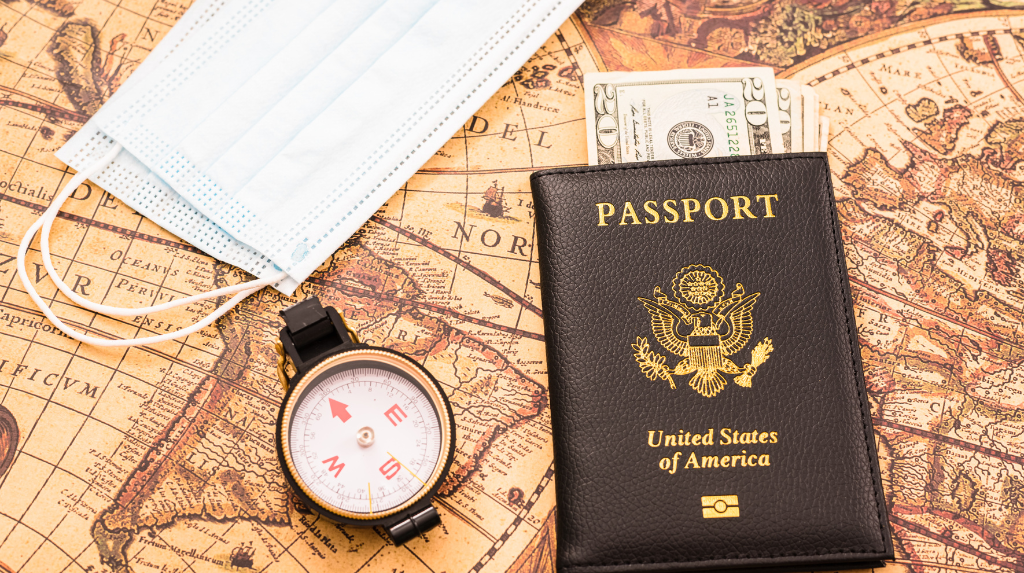So before going into the details of every type of visa, it will be useful to know that in general to visit the United States for a short period, which are most cases, a non-immigrant visa is required regardless of the country of origin. Having said this, it should be noted that there are certain exemptions which include the Visa Waiver Program that have certain countries in mind. This program enables travelers to visit the USA for tourism or business without having to attain a U.S. visa as long as they meet certain specifications.
Categories of U.S. Nonimmigrant Visas
In particular, nonimmigrant visas are issued for approved persons who intend to visit the US for specific reasons and are identified by a letter-number code. Specifically, these visas come in various types, each tailored to a specific goal and issued under certain conditions. Furthermore, each type of visa has its own distinct requirements and application process. For instance, some visas are for students, while others are for workers or visitors. In addition, some visas are for specific industries, such as agriculture or healthcare.
B-1 Visa (Business Visitors)
The visitors on the B-1 visa are expected to be persons visiting the United States in the business of business. Business traveling also covers areas such as attending meetings, conferences, self or company negotiations, and other consultation activities with trade partners. It does not allow a person to have full-time or any other productive work in the U.S.
B-2 Visa (Tourism and Medical Treatment)
It would be pertinent to note that the B-2 visa applies to those seeking tourism to the US or people who need medical treatment in the country. Besides, Vacationers can travel to discover the attractions of various regions, socialize with relatives and friends, or attend short recreational training programs. Anyone arriving to receive medical attention can obtain or avail of healthcare services or establishments.
F-1 Visa (Academic or Language Students)
Moreover, the F-1 visa is designed for individuals seeking to study in the United States at an academic institution, specifically to learn English or a foreign language. Consequently, this visa enables students to gain admission to fully funded educational institutions, including K-12 funding and higher learning funding, enabling them to enroll and participate in various programs of study. Additionally, dependents of F-1 visa holders, such as their spouse and children, can apply for F-2 visas.
H-1B Visa (Specialty Workers)
The H-1B visa is for workers from other countries who are offered employment in specialty occupations that people with at least a bachelor’s degree or related work experience usually engage in. This type comprises areas related to information technology, engineering, health care, and education. Temporary workers who are given H-1B visa are immigrated to the U. S by their employers for employment.
Summary List of U.S. Nonimmigrant Visas
List of A to G Visa Types
- A-1. Ambassadors, public ministers, or career diplomats, and their spouses and children.
- A-2. Other accreditations of officials/employees of foreign missions/agencies, and their dependents.
- A-3. Dominance and employees of Personal attendants, servants in A-1 and A-2 visa Holders, and also, the visa holders’ – spouses and their children.
- B-1. Business visitors.
- B-2. HBP 5 b Leisure travelers and medical tourism.
- C-1. Brief visitors or a voyage through the United States without an intention of doing more than taking a short rest while en route to another country.
- D-1. Persons who are coming to the U. S. for a short time on business, but who are not seeking a permanent job assignment in the United States and who will be departing aboard the same conveyance on which they arrived.
- D-2. Foreign maritime, air, and sea crew members are required to disembark in the United States of America temporarily and leave by another vessel or aircraft.
- E-1. The treaty trader, is employed by a US trading company that conducts 50% or above its business with the home country of that trader; and his/her/their dependents.
- E-2. The treaty investors invested in the United States with their investment capital being at least US 50% owned by their home country’s corporation, and their accompanying spouse and child.
- E-3. Australian professionals coming to the United States to perform services in a specialty occupation (similar to an H-1B, but with a separate allotment of 10,500 visas). Spouses and children may accompany the E-3 visa holder.
- F-1. Academic or language students.
- F-2. Spouses and children of F-1 visa holders.
- F-3. Citizens or residents of Mexico or Canada commute to the U.S. to attend an academic school.
- G-1. Designated principal representatives of foreign governments coming to the U.S. to work for an international organization, and their spouses and children.
- G-2. Other accredited representatives of foreign governments coming to the U.S. to work for an international organization, and their spouses and children.
- G-3. Representatives of foreign governments and their immediate family members who would ordinarily qualify for G-1 or G-2 visas except that their governments are not members of an international organization.
- G-4. Officers or employees of international organizations and their spouses and children.
- G-5. Attendants, servants, and personal employees of G-1 through G-4 visa holders, and their spouses and children.
List of H to K Visa Types
- H-1B. Persons working in specialty occupations requiring at least a bachelor’s degree or its equivalent in on-the-job experience, and distinguished fashion models.
- H-1C. Nurses who will work for up to three years in areas of the U.S. where health professionals are recognized as being in short supply.
- H-2A. Temporary agricultural workers coming to the U.S. to fill positions for which a temporary shortage of U.S. workers has been recognized by the U.S. Department of Agriculture.
- H-2B. Temporary workers of various kinds come to the U.S. to perform temporary jobs for which there is a shortage of available, qualified U.S. workers.
- H-3. Temporary trainees coming for on-the-job training are unavailable in their home countries.
- H-4. Spouses and children of H-1, H-2, or H-3 visa holders.
- I-1. Bona fide representatives of the foreign press coming to the U.S. to work solely in that capacity, and their spouses and children.
- J-1. Exchange visitors coming to the U.S. to study, work, or train as part of an exchange program officially recognized by the U.S. Department of State.
- J-2. Spouses and children of J-1 visa holders.
- K-1. Fiancés or fiancées of U.S. citizens coming to the U.S. to get married.
- K-2. Minor, unmarried children of K-1 visa holders.
- K-3. Spouses of U.S. citizen petitioners awaiting USCIS approval of their immigrant visa petition and the availability of an immigrant visa, who’d like to enter the U.S. and apply to adjust status, as a supposedly shorter way through the system. (This visa is rarely used, as it tends to save no time and cost more.)
- K-4. Unmarried children of K-3 visa holders.
The List of L to P Visa Types
- L-1. Intracompany transferees who work as managers, executives, or persons with specialized knowledge.
- L-2. Spouses and children of L-1 visa holders.
- M-1. Vocational or other nonacademic students, other than language students.
- M-2. Spouses and children of M-1 visa holders.
- M-3. Citizens or residents of Mexico or Canada commute to the U.S. to attend vocational school.
- N-8. Parents of certain special immigrants.
- N-9. Children of certain special immigrants or N-9 visa holders.
- NATO-1, NATO-2, NATO-3, NATO-4, and NATO-5. Representatives, officials, and experts coming to the U.S. under applicable provisions of the NATO Treaty, and also their immediate family members.
- NATO-6. Civilians accompanying military forces on missions authorized under the NATO Treaty, and their immediate family members.
- NATO-7. Attendants, servants, or personal employees of NATO-1 through NATO-6 visa holders, and their immediate family members.
- O-1. Persons of extraordinary ability in the sciences, arts, education, business, or athletics.
- O-2. Essential support staff of O-1 visa holders.
- O-3. Spouses and children of O-1 and O-2 visa holders.
- P-1. Internationally recognized athletes and entertainers, and their essential support staff.
- P-2. Entertainers coming to perform in the U.S. through a government-recognized exchange program.
- P-3. Artists and entertainers come to the U.S. in a group to present culturally unique performances.
- P-4. Spouses and children of P-1, P-2, and P-3 visa holders.
List of Q to U Visa Types
- Q-1. Exchange visitors coming to the U.S. to participate in international cultural exchange programs.
- Q-2. (Walsh visas) Participants in the Irish Peace Process Cultural and Training Program
- Q-3. Spouses and children of Q-1 visa holders.
- R-1. Ministers and other workers of recognized religions.
- R-2. Spouses and children of R-1 visa holders.
- S-5. People come to the U.S. to supply information to U.S. authorities about a criminal organization.
- S-6. People coming to the U.S. to provide information to U.S. authorities about a terrorist organization.
- T-1. Victims of trafficking in persons.
- T-2, T-3. Spouses and children of victims of trafficking.
- TN. Trade visas for Canadians and Mexicans.
- U-1. People who have suffered “substantial physical or mental abuse” as a result of certain U.S. criminal violations including domestic violence and who are assisting law enforcement authorities.
- U-2, U-3. Spouses and children of U-1 visa holders.
U.S. lawful permanent resident petitioners’ spouses and children who have actively waited for three years or more for visa petition approval or immigrant visa availability – and submitted their petition on or before December 21, 2000 – are now eligible to take the next step towards joining their loved ones in the United States.
Eligibility for Nonimmigrant Visas
The eligibility criteria for nonimmigrant visas vary depending on the specific visa category. However, some common requirements include:
Purpose of Visit:
Applicants must clearly define the purpose of their visit and choose the appropriate visa category that aligns with their intentions.
Intent to Return:
Visa applicants must demonstrate their intent to return to their home country after their temporary stay in the U.S. This often involves showing strong ties to their home country, such as family, employment, or property ownership.
Financial Support:
Applicants may need to provide evidence of sufficient financial resources to cover their expenses while in the United States, including tuition fees, accommodation, and living costs.
No Criminal Record:
Individuals with certain criminal convictions or prior immigration violations may be deemed ineligible for a nonimmigrant visa.
Compliance with Visa Terms:
Visa holders must adhere to the terms and conditions of their specific visa category. For example, those on student visas (F-1) must maintain full-time enrollment and cannot engage in unauthorized employment.
Health Requirements:
Some visa categories may also require applicants to undergo medical examinations or provide vaccination records.
Duration of U.S. Nonimmigrant Visas
Nonimmigrant visas come with specific expiration dates, which vary depending on the visa type and individual circumstances. It’s important to note that the visa expiration date does not necessarily dictate how long an individual can stay in the United States.
- Upon entry to the U.S., travelers receive an arrival/departure record, Form I-94, which outlines their authorized period of stay. This date on Form I-94 determines the duration of their stay, which may be shorter or longer than the visa expiration date.
- For multiple entry visas, travelers can re-enter the United States multiple times during the visa’s validity period, as long as each stay complies with the terms of their visa category.
Applying for a Nonimmigrant Visa
The application process for a nonimmigrant visa typically involves the following steps:
Determine Visa Category: Identify the appropriate visa category based on the purpose of your visit to the United States.
Complete Form DS-160: Fill out the Online Nonimmigrant Visa Application, Form DS-160. This form collects personal information and details about your intended visit.
Pay Visa Application Fee: Pay the nonrefundable visa application fee, which varies depending on the visa category.
Schedule a Visa Interview: Schedule an appointment for a visa interview at the nearest U.S. embassy or consulate in your home country.
Gather Required Documents: Prepare the necessary documents, which may include a valid passport, visa application confirmation, photo, Form DS-160 confirmation page, and also any supporting documentation specific to your visa category.
Attend Visa Interview: Attend the visa interview at the designated U.S. embassy or consulate. Also, Be prepared to answer questions about your visit’s purpose, ties to your home country, and other relevant details.
Biometric Data Collection: Some applicants may be required to provide biometric data, such as fingerprints, during the visa application process.
Visa Approval or Denial: After the interview, you will receive a decision on your visa application. If approved, your visa will be affixed to your passport.
Travel to the U.S.: Upon receiving a nonimmigrant visa, you are now enabled to actively plan and embark on your journey to the United States, utilizing the visa’s validity period to enter the country and also achieve your goals.
Understanding Visa Expiration and Authorized Stay
Visa holders must distinguish between the expiration date of their visa and the authorized period of stay in the United States. The visa expiration date controls when an individual can enter the U.S., but Form I-94 actively determines the length of their authorized stay, defining how long they can remain in the country.
Visa holders must depart the U.S. before their authorized period of stay expires. Failure to do so may result in visa violations, making it difficult to re-enter the United States in the future.
Extending Nonimmigrant Visas
In some cases, individuals in the U.S. on nonimmigrant visas may need to extend their stay. Extensions are typically granted for specific visa categories and require applying to U.S. Citizenship and Immigration Services (USCIS) before the current visa or authorized stay expires.
It’s important to apply for an extension well in advance of the expiration date to ensure continuous legal status in the United States. However, The eligibility and documentation requirements for extensions vary by visa category.
Key Points for Switching from H-2B to H-1B
Eligibility:
To switch from H-2B to H-1B, the individual must have a job offer from a U.S. employer for a specialty occupation that requires at least a bachelor’s degree or its equivalent.
Filing Process:
- The new employer must file an H-1B petition (Form I-129) on behalf of the H-2B holder.
- This petition can include a request for a change of status, allowing the individual to transition to H-1B without leaving the U.S.
Maintaining Status:
It is crucial for the H-2B visa holder to maintain valid legal status during the transition. If their H-2B status expires before the H-1B petition is approved, they may face issues.
Concurrent Processing:
If an H-2B holder is in the process of changing status (e.g., applying for another visa), they can still have an employer file for H-1B status. USCIS has indicated that they may process these applications concurrently, which can expedite the transition.
No Need to Depart:
If the H-1B petition is approved while the individual is still in the U.S., they do not need to leave the country to obtain their new visa status
Navigating the complex landscape of U.S. nonimmigrant visas can be challenging, but it’s essential to understand the specific visa category that aligns with your travel or temporary stay plans. Whether you’re visiting for leisure, pursuing academic studies, or working in a specialty occupation, meeting the eligibility criteria and adhering to visa terms is crucial.
Also, Remember that the expiration date on your visa is not synonymous with your authorized period of stay in the United States. Form I-94 determines the duration of your stay, and compliance with its terms is imperative.
How Law and Visas Can Help?
At Law and Visas, our team of expert immigration consultants is here to make your travel to the United States straightforward and successful. Whether you’re applying for a H-2B Visa or B-1/B-2 Visa, we handle every step—from preparing your application to gathering the required documents.
Our Immigration Consultants and Lawyers ensure that your application meets the highest standards, with no details missed. We’ll also keep you informed throughout the process, coordinating with the immigration office or embassy on your behalf.
Law and Visas has a strong record of helping clients secure the visas/permits they need to visit the United States. Call us today at +234 812 5505 986 to learn how we can assist you.





